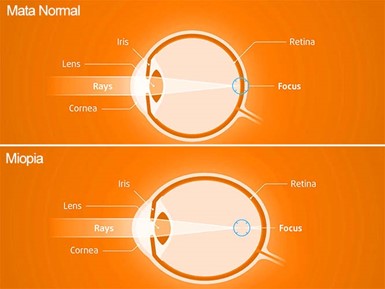
Vision is a very important sense in determining the quality of human life. Myopia or nearsightedness is an eye refraction disorder because the eyeball is too long or the cornea is too convex so that the image that appears is blurred because it is focused in front of the retina. Myopia or nearsightedness is known as minus eye. Conditions like this are usually felt from the age of children and in general myopia can continue to increase with age. The occurrence of myopia can be influenced by the habit of using everyday vision.
Someone who spends more time at the computer or spends a lot of time reading without taking a break will be more likely to suffer from myopia. The severity of myopia varies and varies in each patient. People with mild myopia generally do not need special treatment, but need glasses so they can see much more clearly. If the myopia is classified as severe, the vision becomes very blurry, if not handled properly it will greatly interfere with daily activities. Residents who are in urban areas tend to be at risk of developing myopia because of the very high use of technology.
The main symptom of myopia is blurry vision when looking at distant objects. To be able to see clearly, the lens and lens muscles will work extra to focus the image so that it can be seen more clearly. If this goes on all day without glasses, myopia sufferers will often experience headaches due to eye fatigue. Another common complaint is difficulty seeing the road and traffic signs while driving. In children, it will usually be detected when they have difficulty seeing the writing on the school blackboard. Everyday children will be seen squinting or partially closing their eyes so they can see clearly. Sometimes children also seem to prefer watching television at a very close distance.

The way to deal with myopia is to use glasses or contact lenses of the appropriate size, LASIK surgery and lifestyle changes. Some ways you can do to prevent or reduce myopia include avoiding using computers or gadgets for too long, resting your eyes when using gadgets or computers for 15 minutes in 2 hours, always using glasses or contact lenses that are right for your eye condition, and doing sports. regularly.
Article written by dr. Puji Indah Lestari Sp. M (Eye Specialist at EMC Pulomas Hospital).
